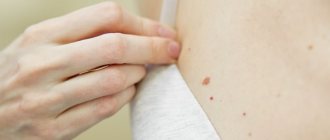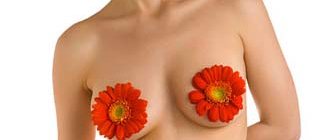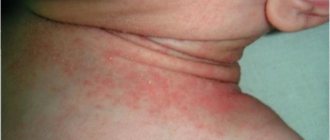Changes that begin in the body from the very first days may be noticeable initially, or may not be noticed until certain moments. So, when nipples dry out during pregnancy, women note not only a feeling of discomfort, but are also at a loss as to why this is happening right now, what does it mean, is it dangerous?
Causes of cracked nipples
They are tears in the skin in the area of the areola (nipple circle) with a transition to the nipple itself, which can bleed during feeding and cause severe pain or discomfort.
Cracked nipples are an important reason for a mother to refuse to breastfeed her child.
Cracked nipples often occur when basic techniques or rules for feeding the baby are not followed.
Cracks in the nipples of a nursing mother are formed when the baby grasps only the nipple itself without involving the areola.
Incorrect weaning by the time the baby stops sucking can also become the basis for the formation of cracks.
Cracked nipples can also be the result of wiping the mammary glands with alcohol-containing solutions for the purpose of disinfection, frequent washing of the breast, or rubbing with force with a hard towel.
Cracked nipples during feeding can be accompanied by a number of basic symptoms.
The cause may be hypovitaminosis, which worsens during pregnancy, or a symptom of a general depletion of the body's defenses.
Cracked nipples can be the result of prolonged feeding, i.e. instead of the prescribed 15-18 minutes, the child is at the breast for 50-60 minutes or even more.
Cracked nipples, which can be caused by improper use of a breast pump, resulting in damage to the capillaries in the area of the nipples or areola.
Cracked nipples can appear when wearing tight clothing that has traces of powder, perfume or deodorant on it due to drying out the nipple area.
Causes of breast changes during pregnancy
During pregnancy, the main reason for changes in the mammary glands is an increase in hormone levels in the body. The following hormones are involved in the process:
- Estrogen and progesterone, which are produced in increased quantities by the placenta, directly affect the mammary glands. Under their influence, the female breast is prepared for the postpartum period - glandular tissue increases, lactation is temporarily blocked.
- Prolactin begins to be produced under the influence of estrogen, with its significant accumulation. The tasks of prolactin include controlling the maturation of the mammary gland and the formation of breast milk. After childbirth, when estrogen and progesterone levels drop sharply, prolactin triggers active production of breast milk.
- Oxytocin is actively produced during lactation, when the baby begins to suckle. The hormone allows milk to be removed from the mammary gland and maintains prolactin levels high.
Important changes in the mammary glands depend on the effects of prolactin, oxytocin and progesterone. Thanks to the combined action of these hormones, the expectant mother will be able to feed her baby with the best nutrition - breast milk.
Symptoms of cracked nipples
Cracked nipples are characterized by the appearance of external changes in the area of both the nipple and areola.
Tearing of the skin and leakage of blood occurs when pressure is applied to the nipple area or the baby is applied to the breast.
Cracked nipples during feeding may result in severe pain or discomfort.
If there is candidiasis (thrush), a fungal infection of the nipples may form in the child’s mouth or in the mother.
This leads to the fact that the nipples become inflamed and, as a result of increased swelling, crack, and is also accompanied by the appearance of lumbago in the area of the mammary glands, both before and after feeding.
Cracked nipples in nursing mothers can cause blood in the milk, which makes breastfeeding more difficult.
Breast care before and during pregnancy
Before and during pregnancy, your breasts require special attention. The advice of oncologist-mammologist Maria Sergeevna Medical Chudinovskikh and our recommendations will help you maintain a beautiful bust and successfully feed your baby with breast milk.
Before pregnancy
First of all, dear expectant mothers, when planning a pregnancy, conduct a full breast examination in order to identify possible diseases (please note that many diagnostic and therapeutic procedures are dangerous to carry out during pregnancy). Be sure to visit a mammologist, undergo an ultrasound procedure, and you may need to have a mammogram (X-ray examination of the mammary glands) to examine your breasts. This procedure can be done only 2-3 months before conception.
Do not delay visiting a mammologist if you have:
- you have had repeated abortions or miscarriages, you took OCs for a long time, you had problems with breastfeeding after a previous pregnancy
- there are (or were) diseases of the thyroid gland, pathology of the pelvic organs (endometriosis, ovarian cysts, uterine fibroids), diseases of the mammary glands (fibroadenomas, cysts or mastopathy)
- The first pregnancy occurred after 30 years.
If you have even the smallest tumor, it can increase during pregnancy. Unremoved fibroadenoma can block the ducts of the mammary gland, as well as provoke mastitis and other diseases.
Now let's talk about the anxiety of expectant mothers that the breasts will lose their attractive appearance and will never look the same again. Do not panic, dear women, you will have time to prepare.
Most likely, you are already watching your weight, and this is very good for your bust. Striae (stretch marks) are less likely to appear during pregnancy and lactation if you do not have extra pounds. With normal body weight, the breast is approximately 25% adipose tissue and 75% glandular. If you are overweight, then there is more fat in your breasts. During pregnancy, the breasts prepare for lactation - under the influence of estrogens, the glandular tissue grows, but the “amount” of skin remains the same. Imagine what will happen to your breasts if next to the glandular tissue there is excess fat or even additional fat that you can “build up” during pregnancy! In addition, such a load stretches the ligaments that support the breasts, so after lactation they will sag.
Special creams containing elastin, silicone and vitamin E strengthen the skin of the chest, abdomen and thighs and increase its elasticity. Start using these creams before pregnancy, before your metabolism and hormone levels change - these are the most common causes of stretch marks.
Preparing nipples for feeding is a separate topic. Consult your mammologist if you have flat or inverted nipples. You may need to use a special feeding shield when feeding. During pregnancy
Firstly , we monitor the condition of our body. Regular aching pain in the chest, its uneven enlargement, the appearance of lumps and depressions, and even more so discharge from the nipples - all this is the basis for an immediate visit to a mammologist.
Don't worry if you feel your breasts itching: the glands are expanding in preparation for milk production, and the stretched skin may be itchy. In this case, use anti-stretch mark creams.
Quite often you can hear the recommendation to rub your nipples with a rough towel. In practice, its implementation quite often leads to irritation of the skin of the nipples and the formation of cracks even before feeding begins. In addition, this procedure stimulates the release of the hormone oxytocin, which causes uterine contractions. And if during breastfeeding this phenomenon allows the uterus to return to normal faster, then during pregnancy such contractions cannot be called useful. They increase the tone of the pregnant uterus and can provoke premature birth in late pregnancy.
Pouring the chest with cold water is only useful in combination with dousing the entire body - as an independent procedure it is meaningless. Numerous studies have not confirmed the opinion that dousing and hardening the breasts increase lactation.
Secondly, in the 3-4th month of pregnancy, buy a maternity bra one size larger than your usual one. And at the 6th month - another size larger. Buy underwear only in maternity stores or pharmacies. Here there is a guarantee that the underwear meets quality standards and has the necessary degree of support. If the breasts are not securely “fixed” during pregnancy, they may sag after childbirth. Do not buy one large bra “for growth” - the cups should fit tightly to the skin and support the breasts well. Wear special bras during the day and nighttime maternity bras or special tops for sleep.
Thirdly, from about 5-6 months of pregnancy, sign up for courses on preparing for childbirth and natural feeding.
Here they will tell you everything about lactation and how to overcome lactation crises and milk stagnation. Feeding is only partly instinctive - it also needs to be learned. And also – be able to teach this to your baby. Articles on the topic All about colposcopy. Diagnostics,... What is the thyroid gland?...
A little about women's rules of feminine hygiene Eat right during... How to increase immunity? Interview…
Complications of cracked nipples
Cracked nipples during breastfeeding can greatly complicate the process of feeding the baby itself, which creates the need to switch to artificial formula without treating this disease.
Cracks in the nipples of the breast can be complicated by the penetration of infection into the wounds of the nipple, forming severe catarrhal or purulent inflammation of not only the nipple, but also the entire mammary gland (mastitis).
When Candida albicans gets on a wound, it causes the development of nipple thrush, which makes it impossible to continue feeding the baby, since the risk of infection is high.
Cracked nipples can facilitate the transmission of infections from mother to baby.
Recommendations
Important recommendations from a therapist, obstetrician and gynecologist in most cases concern proper nutrition, enriched with vitamins and microelements, as well as a proper lifestyle. Women who smoke before pregnancy or during pregnancy risk complications such as dry nipples, allergies and irritations on the skin of the mammary glands. Nicotine dries out the skin, making it thinner and more susceptible to external factors.
Important!
It is worth undergoing an additional consultation with an endocrinologist to rule out diseases of the thyroid gland, pancreas and adrenal glands. These organs can affect pregnancy and the production of hormones, which causes a change in the qualitative composition of secretions from the breast in later stages .
Treatment of cracked nipples
Treatment of cracked nipples is carried out at their first appearance, which is aimed at reducing their trauma and excessive drying.
To prevent the nipple area from drying out, you can use both drops of breast milk (this lubricates the nipple after breastfeeding) and various oils (sea buckthorn, olive).
Treatment of cracked nipples includes the use of wound-healing ointments or creams (bepanthen, lanolin), and if wounds become infected, you can use antibacterial ointments (baneocin).
Cracked nipples should be treated using physiotherapy methods that help relieve inflammation and its signs (swelling, pain, redness and dysfunction), and also increases the body’s protective properties, has a bactericidal effect and promotes rapid wound healing. A specialist from Belozerova’s hardware therapy clinic “M-Clinic” will tell you how to treat cracked nipples.
Causes
The main reason for the appearance of cracks is the child’s insufficient latching on the breast during feeding. When applied correctly to the breast, the nipple rests against the baby's palate in a fixed, motionless position; the baby squeezes the areola with its jaws, facilitating the flow of milk. In this case, the child’s lower lip is tucked in. If the nipple is not inserted to the proper depth, then it ends up on the tongue, becoming mobile, the lower lip injures the nipple and areola, and the jaws compress the breast in the most sensitive and easily damaged place. As a result of constant irritation of the areas of the nipple and areola, damage to the skin occurs - cracks form. The second common cause of cracked nipples may be improper weaning of the baby. Often, when feeding, mothers do not support the baby's head, and also position his stomach not towards her, but upward. As a result, at the end of feeding, the baby turns away from the breast, pinching the nipple in his jaws. There is pressure on areas of the nipple that are not intended for this. Another common cause may be excessively frequent nipple washing. Modern medicine does not support the need to wash your breasts after every feeding. With frequent washing, the nipples are washed away with their natural lubricant, which is secreted by special glands in the skin of the areola (Montgomery glands) and the nipples lose one of their natural protective mechanisms. Cracks can also develop when feeding older children as a result of bites from erupted teeth. The development of thrush contributes to the appearance of cracked nipples.
Experts' opinion
An important component of the emulsion is licorice extract, the anti-inflammatory activity of which has been clinically proven as part of a study of the biological activity of aqueous extracts of chamomile flowers, raspberries, licorice rhizomes and their combinations at the Bashkir State University.[1]
A clinical study of La-Cri products proves their high effectiveness, safety and tolerability for daily skin care of adults and children. The products are recommended by the Union of Pediatricians of Russia and are safe for the delicate skin of the expectant mother.
Changes in the body during pregnancy
When a woman becomes pregnant, her body undergoes significant changes. The load on the internal organs becomes more intense: blood circulation increases, the kidneys and liver begin to function faster. The body itself changes greatly: the hips become wider and the breasts seem larger. Over time, the abdomen also increases and subcutaneous fat is deposited on the sides. This is not dangerous, since all pregnant women have such manifestations. The majority of pregnant women notice that their nipples also change: they may darken, peel, and undergo various changes.
A woman needs her breasts to naturally feed her baby; the organ changes during the menstrual cycle. All women noted that before menstruation, the skin of the breast becomes sensitive.
Nipples change a lot during pregnancy. They can increase in size and change in shape and color. This is not a disease. Doctors tell all expectant mothers that peeling nipples are normal. But its appearance may be due to several reasons: pathological and natural. Since it is difficult to get rid of nipple changes, you need to be prepared for this in advance.
Peeling skin during pregnancy: what to do
- Cleanse skin thoroughly. This is especially true for the breasts and nipples, where secretions are constantly released.
- Drink enough fluids.
- Use special products for dryness and stretch marks, which contain a minimum of chemicals.
- Eat right, take vitamins.
- Wear clothes made from natural fabrics.
It should be understood that if peeling is caused by any abnormalities in the body, eliminating only external manifestations will not be effective. If such disorders are diagnosed by a gynecologist after a regular examination, he will refer the pregnant woman to specialized specialists.
Sources:
- Habiff Thomas P., Clinical Dermatology. Acne-like and papulosquamous dermatoses, publishing house: MEDpress-inform, 2014
- Churolinov Petr, Herbal medicine in dermatology and cosmetics, Medicine and Physical Education Publishing House, 1979
- Schneiderman Paul, Grossman Mark, Differential diagnosis in dermatology. Atlas, Publishing house: Binom, 2017











